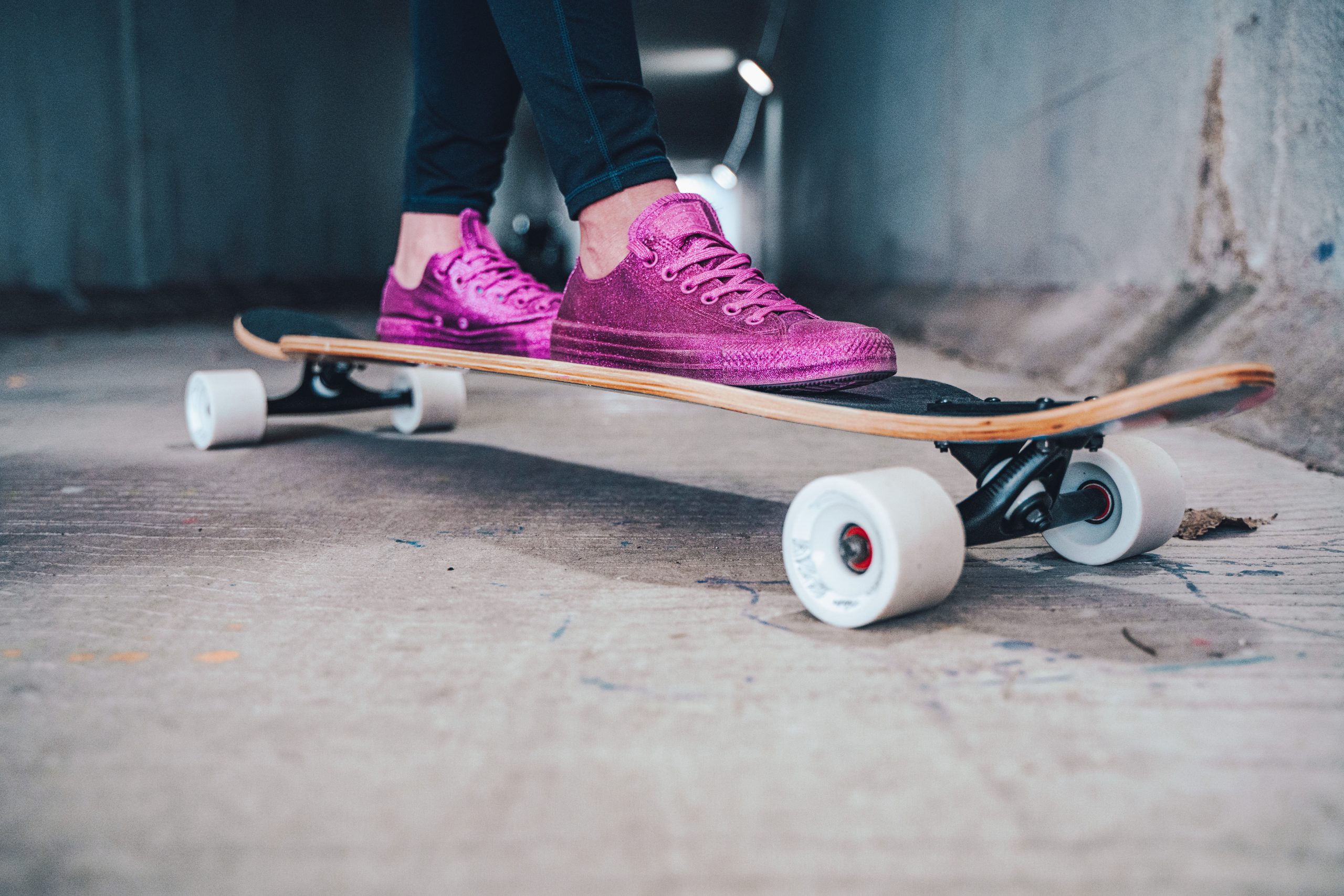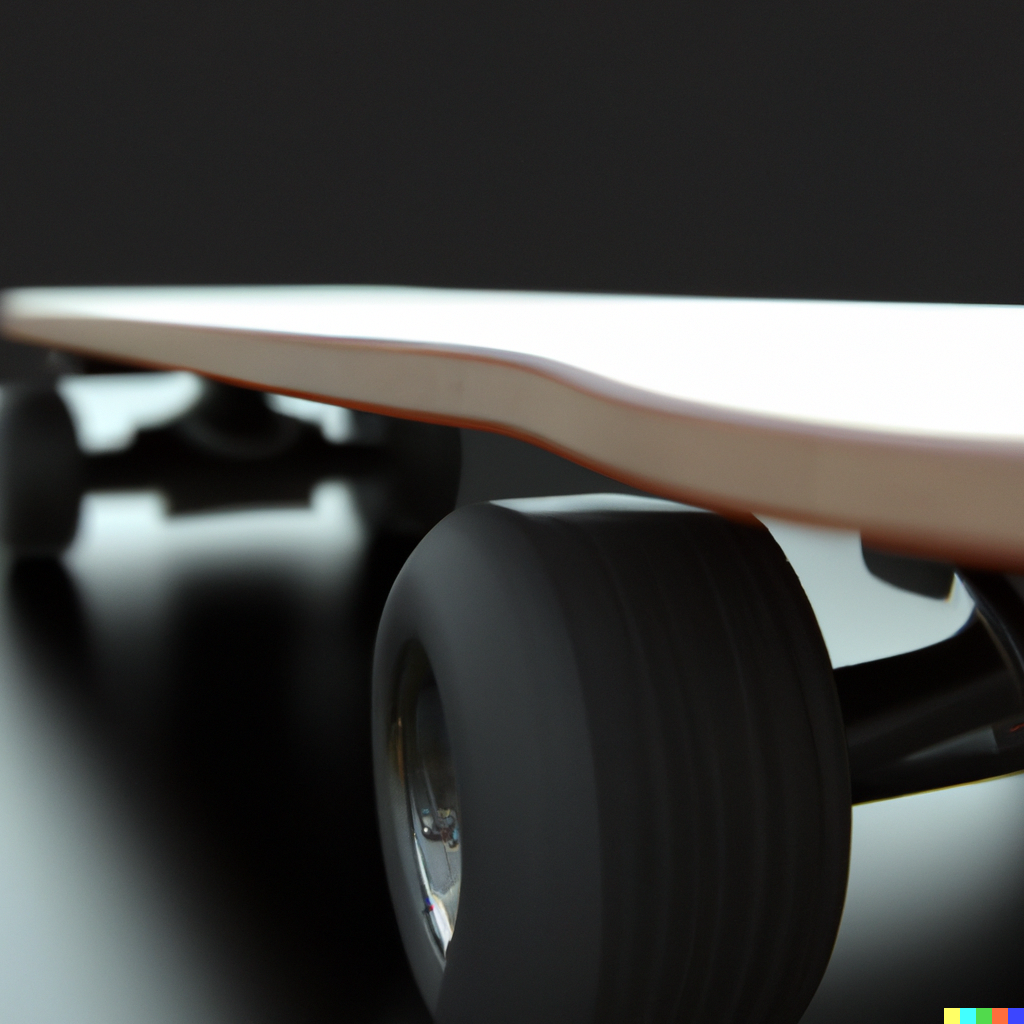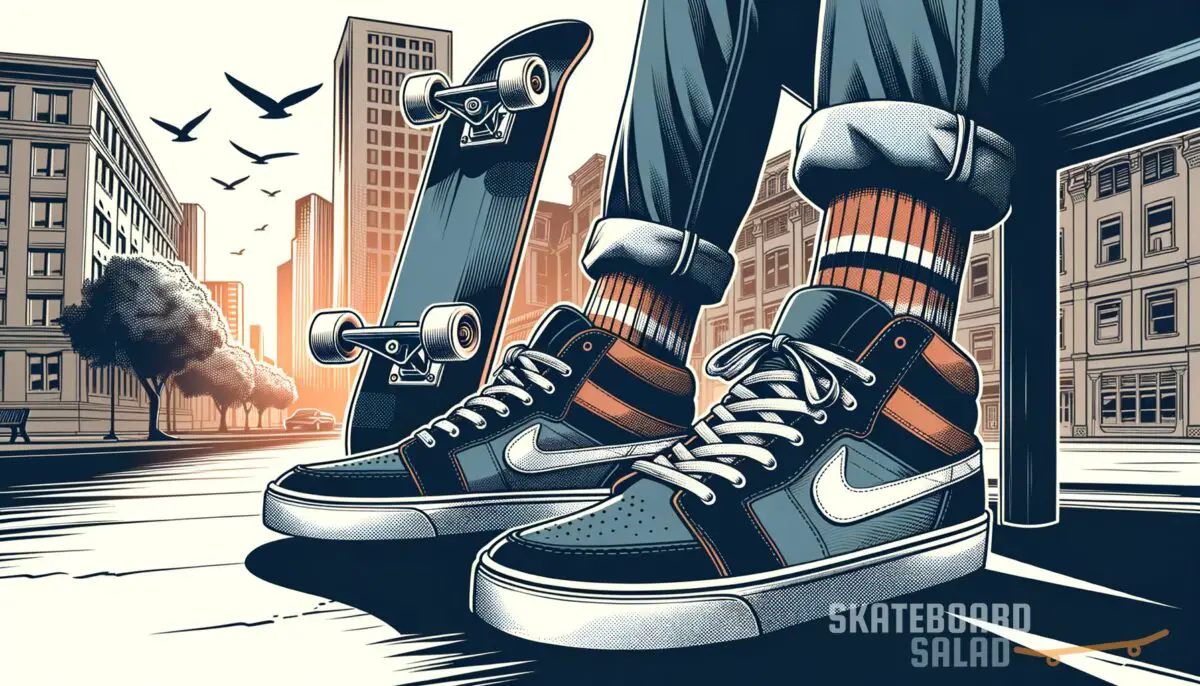We all know our skateboard wheels are some of the most important components, but do you even know what skateboard wheels are made of?
In this post, you’ll learn about skateboard wheels and how they impact your ride. From the different materials used for skateboard wheels to how to choose the right size and hardness, we’ve got you covered. And trust me, knowing this information is essential if you want to take your skateboarding game to the next level.
So what are skateboard wheels made of? Skateboard wheels can be made of different materials, including polyurethane, plastic, metal, and rubber. Each material has its pros and cons and can significantly impact the ride and performance of your skateboard. It’s essential to choose the right material for your riding style and the type of terrain you’ll be riding on to unlock your full potential on a skateboard.
What is a skateboard wheel?
A skateboard wheel is a round object made of polyurethane, plastic, metal, or rubber attached to a skateboard’s underside. The wheel rotates around a central axis, allowing the skateboard to move forward. Skateboard wheels are important to skateboarding because they determine how the skateboard performs on different surfaces, how fast it can go, and how easy it is to maneuver.

Also, the material, size, and hardness of the skateboard wheels can all change how the board rides and, by extension, how skateboarding feels as a whole.
What are skateboard wheels made of?
Skateboard wheels were made of metal in the early days of skateboarding. The wheels were designed for roller skates, but skaters mounted them to their boards. This practice was put to rest when Frank Nasworthy invented the first urethane wheel in the 1970s. Since then, skateboard wheels have been fashioned with polyurethane resin.
As a result, it is commonly referred to simply as urethane. Because this adaptable material can be made in various hardness levels, it has dominated the skateboard wheel market. However, not all urethane is the same, and not all wheels are the same. As a result, many skateboard wheel makers are continuously experimenting with new material combinations to make the wheels more durable, quicker, smoother, slide better, and notably flat spot resistant.
What are the different materials used for skateboard wheels?
Below are some of the most common materials used to make skateboard wheels.
Polyurethane
Polyurethane is a one-of-a-kind material that enables a skateboarder to weave around a street. It was a groundbreaking development that accounts for nearly all skateboard wheels on the market today.
The elastic nature of polyurethane skateboard wheels enables faster turns and a faster ride without having to worry about the wheels sliding out. It wears less than earlier wheel models, has more grip, and produces a smoother ride. Polyurethane was one of the skateboarding breakthroughs that contributed to the sport’s explosive growth.
Skateboard wheels are made of two types of polyurethane: diisocyanates (the optimum substance for a better wheel) and polyols. As a result, your skateboard wheels will be more abrasion resistant and last longer.
Plastic wheels
Plastic wheels are a less common type of skateboard wheel. They tend to be less expensive than other types of wheels and are typically more durable and resistant to wear and tear. Plastic skateboard wheels come in various sizes, ranging from 48mm to 60mm in diameter. The wheel size you choose can impact your skateboard’s speed, grip, and maneuverability.
Overall, plastic wheels are best used for cruising on smooth surfaces. They are less suitable for technical skateboarding or riding on rough terrain, where grip and control are critical. Plastic wheels can be a good choice if you’re a beginner or looking for a cost-effective option. However, if you’re an experienced rider, consider other materials that can provide more control and performance.
Metal wheels
Metal wheels are another less common type of skateboard wheel. They are durable and resistant to wear and tear and can provide a smooth ride on surfaces like concrete. However, metal wheels can be heavy and noisy, and they need to provide better grip or maneuverability, making them less suitable for most types of skateboarding.
Metal skateboard wheels come in various sizes, ranging from 50mm to 80mm in diameter. The wheel size can significantly impact your skateboard’s speed, grip, and maneuverability. Smaller wheels are slower but more maneuverable, while larger wheels are faster but less maneuverable. Therefore, choosing a wheel size that matches your riding style and the terrain you’ll be riding on is essential.
Metal skateboard wheels are best used for cruising on smooth surfaces, particularly in high-temperature environments. They are less suitable for technical skateboarding or riding on rough terrain, where grip and control are critical. Metal wheels can be a good option if you’re an experienced rider looking for a durable wheel that can provide a smooth ride.

Rubber wheels
Rubber skateboard wheels are popular for riders because of their excellent grip and shock absorption. They are made from high-quality rubber, which provides a comfortable ride on most types of terrain. They are a softer type of skateboard wheel that provides good grip and maneuverability, making them suitable for most types of skateboarding. In addition, they tend to be quieter than other types of wheels and provide a smooth ride on rough surfaces.
One of the main advantages of rubber skateboard wheels is their grip. They offer excellent traction and control, which makes them ideal for technical skateboarding or riding on rough terrain. Additionally, rubber wheels are quieter than other materials and provide a smoother ride.
Rubber skateboard wheels come in various sizes, ranging from 50mm to 75mm in diameter. The wheel size can significantly impact your skateboard’s speed, grip, and maneuverability. Smaller wheels are slower but more maneuverable, while larger wheels are faster but less maneuverable. Choosing a wheel size that matches your riding style and the terrain you’ll be riding on is essential.
How does the durometer affect the ride?
It’s time to talk about the durometer – a measure of the hardness of your skateboard wheel. This little number can have a big impact on your ride, and let me tell you, it’s not always for the better.
A higher durometer means a harder wheel, which can provide more speed but less grip. And a lower durometer means a softer wheel, which can provide more grip but less speed. It’s a delicate balance, and finding the right durometer for your riding style, and the type of terrain you’ll be riding on is crucial to unlocking your full potential on a skateboard.
One real-world example is my friend Mike. He used to ride a durometer that was too high for the rough terrain around his house, and let me tell you, it wasn’t pretty. He was constantly wiping out, losing speed, and feeling frustrated with his performance. But once he switched to a lower durometer that provided more grip, he could regain his confidence and tackle those rough spots with ease.
My advice to you is this: don’t overlook the durometer. Take the time to find the right one for your riding style and the terrain you’ll be riding on. Your skateboard and your sanity will thank you for it.
If you want even more tips and insights, watch this video called “How It’s Made: Skateboard Wheels” from the Science Channel YouTube channel.
Frequently asked questions (FAQ)
Do you still have questions? Below are some of the most commonly asked questions about what skateboard wheels are made of:
How does the durometer affect the ride of a skateboard wheel?
The durometer is a measure of the hardness of the skateboard wheel. A higher durometer means a harder wheel, which can provide more speed but less grip, while a lower durometer means a softer wheel, which can provide more grip but less speed. Choosing the right durometer for your riding style and the type of terrain you’ll be riding on is crucial to unlocking your full potential on a skateboard.
Can I use any size skateboard wheel on my board?
Skateboard wheels come in different sizes, and choosing the right size for your skateboard is important. Smaller wheels are slower but more maneuverable, while larger wheels are faster but less maneuverable. Choosing a wheel size that matches your riding style and the terrain you’ll be riding on is essential.
Are plastic skateboard wheels a good option for beginners?
Plastic skateboard wheels can be a good option for beginners because they are less expensive than other materials, typically more durable, and resistant to wear and tear. However, they may provide less grip or be more responsive than other wheels, making them less suitable for technical skateboarding.
What are flat spots?
When doing powerslides (turning the board sideways and sliding on all four wheels, perpendicular to their rolling direction in order to slow your board down), 180 powerslides (turning the board 180° while skating without doing an ollie or other tricks), and other slide tricks like the blunt side, your wheels may become severely irritated.
You’ll develop flat spots on your wheels. When this happens, your wheel will no longer be perfectly round and, consequently, won’t roll properly. This happens most commonly with soft wheels.
Conclusion
Well, folks, we’ve covered a lot of ground today. From the durometer to the different materials used for skateboard wheels, there’s a lot to consider when finding the right wheels for your skateboard. But don’t worry – with a little research and some trial and error, you’ll be rolling like a pro in no time.
Remember, it’s not just about the speed or the grip – it’s about finding the right balance that works for you. So feel free to try new things and experiment with different types of wheels. Who knows? You might find your perfect match.
And on that note, I’ll leave you with a joke. Why did the skateboard wheel break up with the axle? Because it felt like it was getting shafted. Alright, that’s it for me. Keep on rolling, my friends.
Key takeaways
This article covered what skateboard wheels are made of, the different materials used, the impact of the durometer on a ride, and the best use for plastic, metal, and rubber skateboard wheels. Here are some key takeaways:
- Skateboard wheels can be made of polyurethane, plastic, metal, or rubber, each with pros and cons.
- The skateboard wheel’s durometer significantly affects the skateboard’s ride and performance.
- Skateboard wheels come in various sizes, and it’s essential to choose the right size for your riding style and terrain.
- Plastic wheels are durable, affordable, and offer resistance to flat spots, while metal wheels provide a smooth ride and are more resistant to high temperatures. Rubber wheels offer excellent grip and shock absorption but tend to wear down quickly.
- Finding the right skateboard wheels requires experimentation and research to find the perfect balance between speed and grip.
So, what are your thoughts? Did this article help you understand what skateboard wheels are made of? And did I cover everything you wanted to know? Let me know in the comments section below (I read and reply to every comment).
Remember to share this article with a friend if you found it helpful. And for more tips and tricks on skateboarding, be sure to check out my full blog.
Until next time, keep skating, and remember to have fun. Catch you later!
















